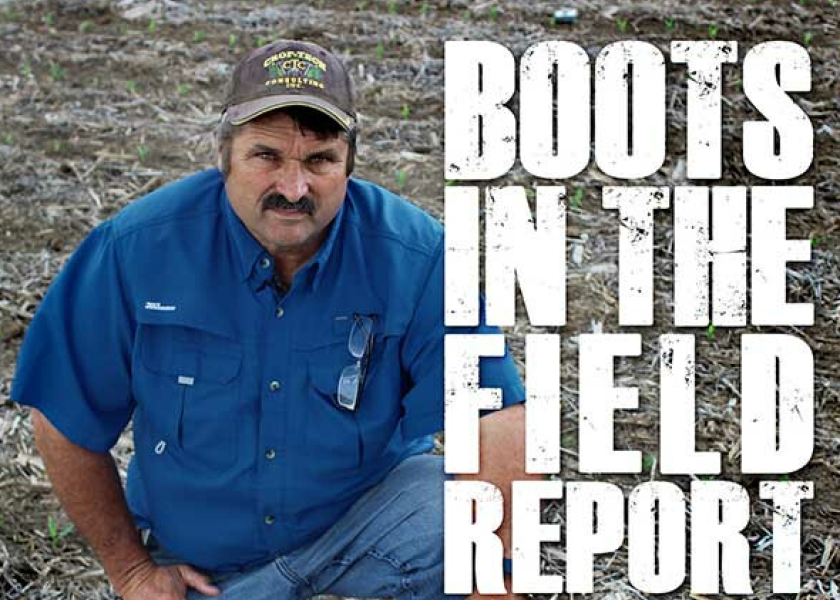Ferrie: Tar Spot is ‘Causing the Wheels to come off the Bus’

Tar spot is taking a toll on corn crops in parts of Illinois this week, says Ken Ferrie, Farm Journal Field Agronomist and owner of Crop-Tech Consulting, Heyworth, Ill.
“In a number of fields, not only have the wheels come off the bus, but it's sliding down the highway on its frame and the sparks are flying,” he says.
What Ferrie is seeing with tar spot in some fields is unprecedented. Heavily infected fields, particularly those with D hybrids, have essentially progressed from August 31 to October 31 in roughly a week’s span – and not in a good way.
“Fields that had a decent amount of green went dead-brown in seven to 10 days,” he explains. “The corn all died early, most of it before reaching black layer.
“These hybrids couldn’t protect themselves in that hot weather, and it (tar spot) killed them. Most of these hybrids needed another three weeks to finish right,” he adds.
As Ferrie scouted fields this week, many already had rubbery cobs and were putting in what he describes as a gray layer, a much lighter and thinner layer than the normal black layer you want your corn crop to achieve.
For farmers with D hybrids, which get most of their yield punch during the last 30 days of fill, this is going to lead to disappointing yield results.
 “Some growers have said it looks like harvest is coming quicker this year – that we must have had more heat units than usual – but that's not the case,” Ferrie says. “This tar spot has worked on the corn like a killing frost, and stalk quality is deteriorating fast.”
“Some growers have said it looks like harvest is coming quicker this year – that we must have had more heat units than usual – but that's not the case,” Ferrie says. “This tar spot has worked on the corn like a killing frost, and stalk quality is deteriorating fast.”
Start conducting the push test on hybrids now. Ferrie says pest teams need to check every field of corn now that could potentially be at risk – even if they checked the field 10 days ago. Then, provide that information to your harvest team, so they can set up a pecking order on which fields to harvest first.
“It’s hard to believe some of this 115-day corn planted at the end of April is buckling over on September 7,” Ferrie says. “Some of this is the same corn that 20 days ago looked like it was going to kick it through the goal post for a big yield number.”
For more insights on how to manage corn harvest for those hybrids affected by tar spot, listen to Ferrie’s full recommendations in this week’s Boots In The Field podcast, available here: https://www.croptechinc.com/bifr-9-13-2021/
Ferrie: Severe Tar Spot is Shutting Down Corn, Encouraging Top Leaf Dieback
Ferrie: Disease Pressure is Bringing Corn to its Knees
Ferrie: Southern Rust is in some Illinois Corn at R4 Stage, 30 Days from Finish Line







